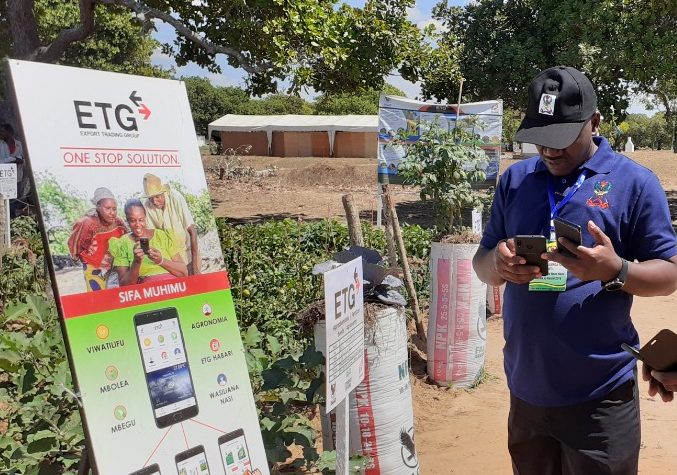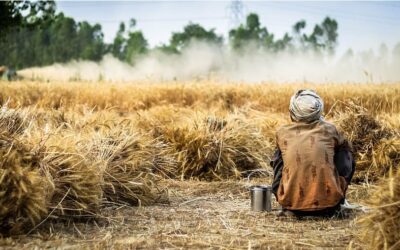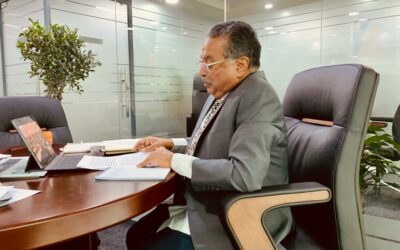D4Ag: The Panacea to Africa’s Agricultural Transformation?

The theme of the African Green Revolution Forum 2019 was “Grow Digital: Leveraging digital transformation to drive sustainable food systems in Africa.” This followed the comprehensive “Digitalisation of African Agriculture” report that was published earlier this year by the Technical Centre for Agricultural and Rural Cooperation (CTA) together with Dalberg Advisors. The report mapped the D4Ag (digitisation for agriculture) landscape in Africa today, including its scale, its opportunities, and proof of its impact. Its intention was to consolidate evidence and provide projections that would offer entrepreneurs, investors and governments guidance on investment and policy decisions. It is clear to me that D4Ag is taking centre stage in the discussions on how to transform Africa’s agriculture into the powerhouse it has the potential to be.
At ETG and the ETG Farmers Foundation, we are in exploratory mode. We have initiated three ongoing pilot projects with different mobile apps, seeking to target different requirements. All three are based in East Africa, namely Kenya and Tanzania. This is apparently part of a larger trend. The CTA report states that over half of the D4Ag solutions present in 49 Sub-Saharan African countries are headquartered in East Africa, “and nearly two-thirds of registered farmers across all solutions are based in East Africa, with Kenya leading the way.” This is in large part due to smartphone access, mobile literacy and an enabling tech ecosystem including widespread adoption of mobile money, primarily in the form of Safaricom’s M-Pesa. Kenya is also collaborating with global players such as the World Bank in building national agroclimatic data surveillance systems. According to the Malabo Montpellier Panel’s country-level ranking, Kenya ranks first in D4Ag readiness.
In Kenya, ETG is piloting the uLima app, which aims to link suppliers of agri-inputs including fertilisers, seeds, chemicals, livestock feeds and farming equipment, with agro-dealers and through them, with smallholder farmers. In the first phase of the pilot, fertiliser bags with QR codes were delivered to distributors. When purchasing these products, farmers registered for uLima and in turn received uLima ‘coins’, which they could then exchange for benefits such as weather insurance, airtime and discounts. They were also encouraged to bring their soil for testing. Suppliers were incentivised by obtaining customer data analytics and were able to directly interface with farmers for marketing purposes. Over 4,000 farmers were registered during this phase. Besides the transactional benefits for both parties, uLima also showed us how useful these apps are in collecting data such as the average procurement of fertilizer bags by farmers with different profiles; the efficiency of uLima as a marketing tool; and the distances between farmers and agro-dealer depots, as well as the frequency of shop visits.
On the non-commercial side, our ETG Farmers Foundation was recently engaged in another small-scale pilot project, that involved customising an app developed with GreenFingers Mobile. It functions as a farmer registry, with field extension officers using a network of lead farmers to collect data about crop cycles, indicating capacity in that area. Roughly 3,000 farmers have so far been registered to the app. The app also records farmer participation in training sessions, tracking the correlation between training and improved yield. Further, it acts as a repository for commercial exchange, logging how much produce has been sold and at what cost, deducting input loans from the produce sold, and with the potential of printing instant receipts via Bluetooth printers. This particular functionality contains the transformative prospect of generating financial reports that demonstrate long-term improvements in yield, and that could be taken to banks to prove loan eligibility. Some of these features are still being fine-tuned and tested, but the possibility of accurate and timely data collection, as well as sound monitoring and evaluation, is truly unique. The next phase will require intensifying the collection of field data among smallholder farmers, through digital skill building, and the increase of smartphone usage among lead farmers.
Data is today considered to be the world’s most valuable resource, and has been labelled the oil of the digital era (The Economist, 2017). Digitisation has transformed aspects of our lives, and of our world, in ways that are still sometimes hard to believe. I have hope that D4Ag solutions can similarly be the driving force behind the revolutionising of African agriculture. Farmers can access the information, insights and inputs they need to increase productivity and profitability. Digital businesses and not-for-profit enterprises can better understand their target segments and recalibrate their interventions accordingly to suit the smallholder farmer. Crucially, governments can collect and analyse macro-level data sets to better inform policy design and implementation.
CTA states: “The result – if fully implemented at scale – would be a highly connected, intelligent, real-time agricultural ecosystem that is vastly more productive, efficient, and transparent than ever before. The growing quantity and quality of agricultural data and digital agricultural solutions significantly reduce the costs of service, inputs, and information delivery for farmers and other value chain intermediaries. This enables them to productively transform their traditional business models.”
What more do we need?
Continue Reading
World Environment Day – Revisiting “Only One Earth”
Climate change is real. It affects developing nations disproportionately as compared to developed nations. Developing nations should not wait for help to do good for the environment but work towards ensuring that these challenges are met headlong. They should know that sustainability goals and development is not mutually exclusive.
World Food Crisis – How Africa can be the long-term solution
Africa has abundant resources to be the food factory for the world. This holds true especially for vegetable oil crops such as Sunflower, palm, soybean and rapeseed. Tanzania provides ideal conditions for growing sunflower at scale and supply it’s oil to the major consuming nations such as India.
Earth Day – Rising to the challenge of saving ourselves
We need to find solutions to ensure we can not just stop but reverse climate change. One solution is regenerative agriculture that can not only improve the yields for the farmers, but also reduce their carbon footprint.




0 Comments